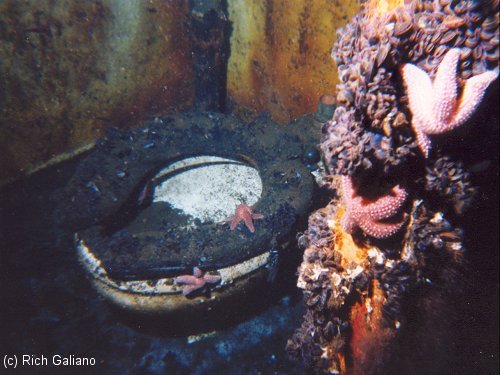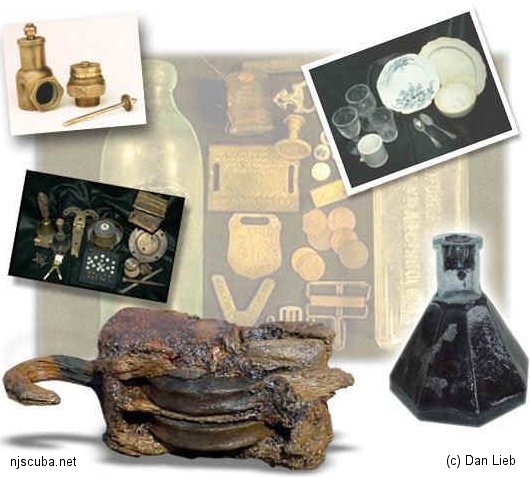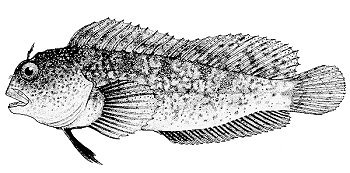Objects
Bits of Ancient Village Hide in Murk
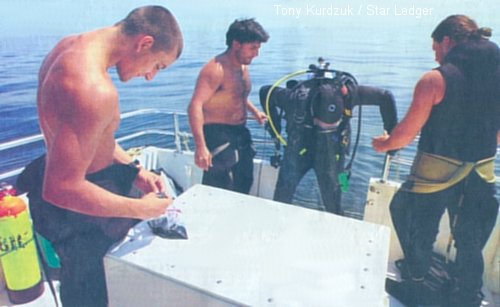
A team of archaeologists in scuba gear combs what was once dry land for pre-Lenape artifacts
More: Arrowheads ...
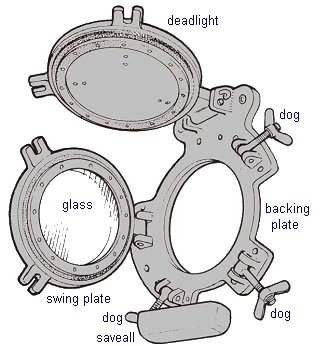
Portholes are used to let light and air into a ship. They are usually constructed of brass for corrosion resistance, which makes them highly desirable as collector's items. The drawing at right shows all the major parts:
- The immovable backing plate, bolted to the vessel's hull, which carries the hinges for the swing plate and deadlight
- The glass swing plate, which is secured shut by large butterfly nuts called 'dogs'
- The deadlight, used when it is desired to black-out the vessel, as in time of war
More: Portholes & Deck Lights ...
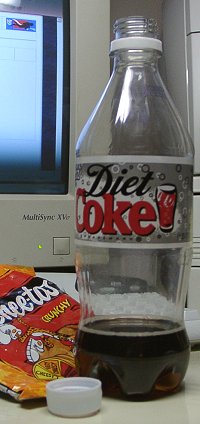
What I know about antique glass bottles wouldn't cover both sides of a matchbook. But here are some excellent links on the subject, so you too can learn the difference between a pontil and a blob:
Miscellaneous Links:
Right: Plastic Coke bottle with screw top
More: Bottles ...
While not exactly shipwreck artifacts, lobster traps, scallop dredges, and other fishing equipment are not uncommon sights on and around New Jersey shipwrecks.
Lobster Traps
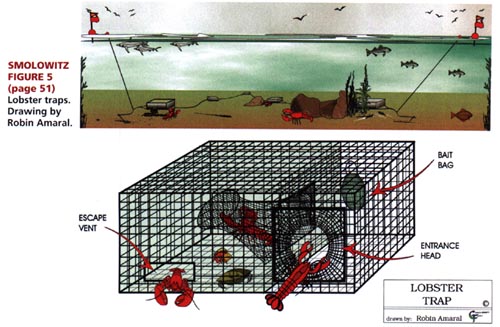
More: Traps & Dredges ...
A Glittering Piece of History is Recovered From the Briny Deep
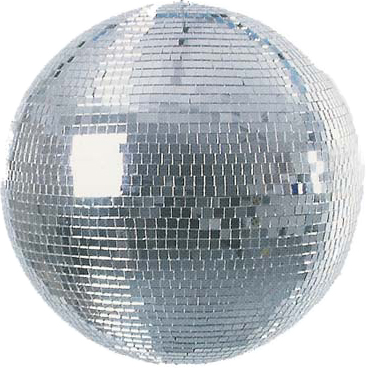
ASSOCIATED PEST
July 25, 2004

Deep Sea Defectives is proud to announce the recovery of the Andrea Doria's disco ball. World-famous deep-sea scuba diver John Chatterbox found the ball after mining hidden nuggets from blueprints and records of the vessel to determine its most likely location. He then did a hazardous penetration deep into the bowels of the wreck, which is lying on its side in crazy deep lotta water.
Right: Chatterbox "gets down" with some hot wreck-diving moves
More: Disco Ball ...

